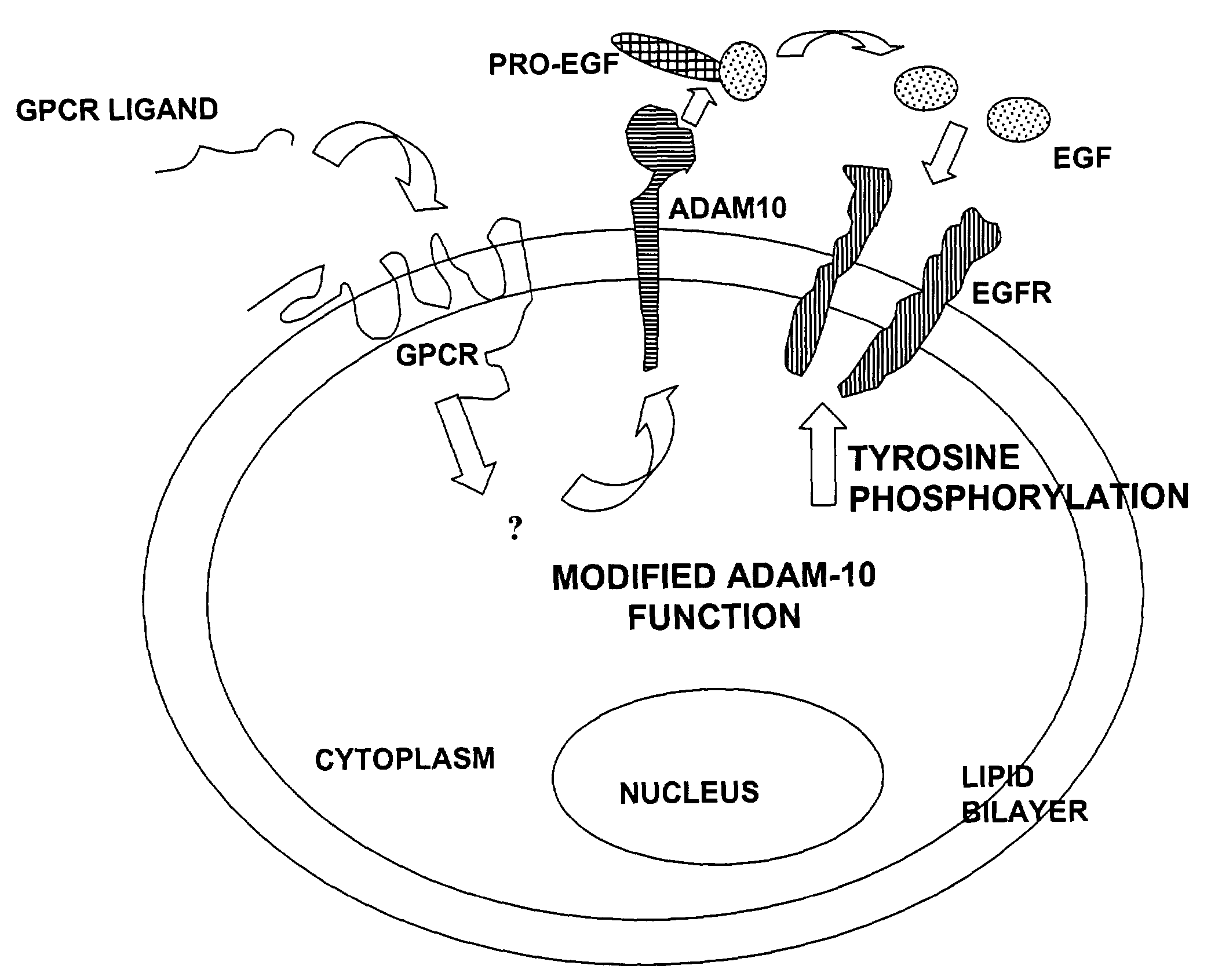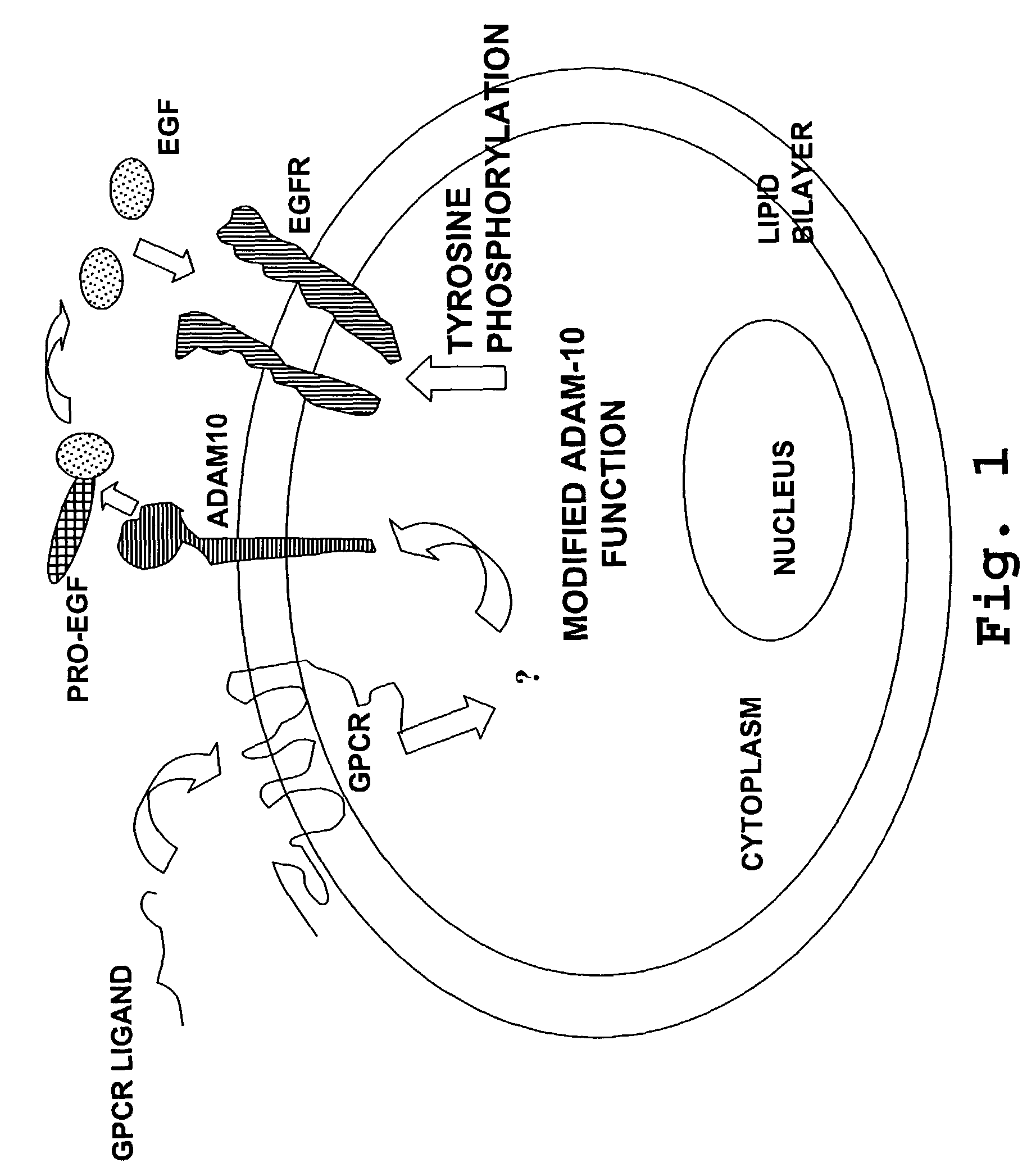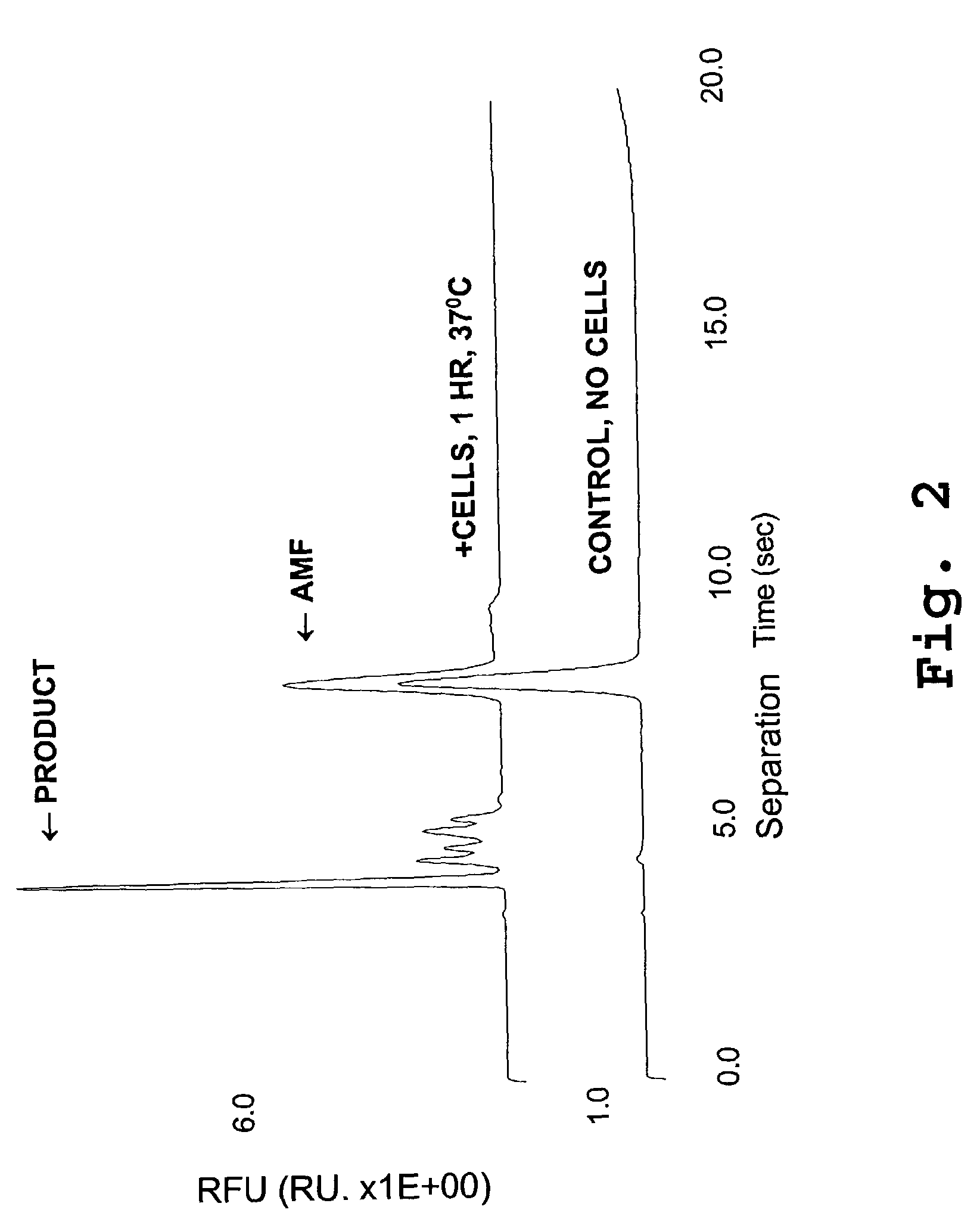Whole cell assay systems for cell surface proteases
a technology of proteases and whole cells, applied in biochemistry apparatus and processes, instruments, enzymology, etc., can solve the problems of large number of cells, introduction of artifacts, and time-consuming methods, and achieve the effect of modulating the activity of said adam
- Summary
- Abstract
- Description
- Claims
- Application Information
AI Technical Summary
Benefits of technology
Problems solved by technology
Method used
Image
Examples
example 1
Detection of Cleavage of TNF-α by ADAM 17
[0225]A TNF-α peptide fragment, known to be a substrate for ADAM 17, was labeled at the N-terminus with fluorescein. This compound, 5-carboxyfluorescein-SPLAQAVRSSSR-amide, was designated TNF-α-FL, and the amino acid sequence is designated SEQ ID NO: 2. The compounds was added to THP-1 cells, which are known to possess relatively large quantities of ADAM 17. After a one-hour incubation, aminomethyl fluorescein was added as an electrophoretic marker, and the reaction supernatant was separated by capillary electrophoresis.
[0226]FIG. 2 shows a typical cleavage pattern obtained with these cells. The peak marked “product” has a mobility consistent with the theoretical mobility of the putative cleavage fragment, as calculated from its mass and charge. The product was not present in the absence of cells, indicating that a cellular component caused the substrate to be cleaved.
[0227]FIG. 3 shows the cleavage response as a function of increasing incuba...
example 2
Determination of Ligand Effects on GPCR Activity, via Measurement of ADAM 10 Activity
[0232]The methods of the invention can also be used to determine the activity of an effector that is functionally associated with an ADAM. For example, ADAM 10 has been reported to mediate the transactivation of EGF receptor by a GPCR (Yan et al., 2000). The activity of the GPCR can thus be determined by measuring ADAM 10 activity. Furthermore, putative agonists or antagonists of the GPCR can also be added to this assay system to determine their effects on the GPCR, which would be reflected by a change in the cognate ADAM activity.
[0233]Three known ligands for GPCRs, endothelin-1, LPA and carbachol, were employed to demonstrate the effectiveness of the assay in reflecting the effect of each ligand on its cognate GPCR. PMA was also tested for its effect on ADAM 10 activity.
[0234]Rat-1 cells, which are known to have ADAM 10 at the cell surface, were combined with a substrate derived from CD40L (5-carb...
example 3
Kinetic Study Using the ADAM Assay
[0239]The present invention can also be used in kinetic studies of ADAM activity. To this end, THP-1 cells expressing high levels of the ADAM 17 protein were incubated with varying concentrations of substrate, and the velocity of the protease cleavage reaction was determined. The velocity was plotted against the concentration in each reaction (FIG. 12), and the Km was calculated to be 4.6 μM (similarly, other kinetic parameters can be measured).
[0240]It is worth noting that kinetic studies are conventionally performed, in the present state of the art, with purified enzymes or substantially purified enzymes in order to obtain clear results. If cell lysates, which contain many other cellular factors, are used, the data are typically too variable to allow calculation of an accurate Km. Whole cell systems also do not usually result in clear kinetic data.
[0241]In contrast, the present assay is a whole cell assay; therefore, the reaction can be performed ...
PUM
| Property | Measurement | Unit |
|---|---|---|
| thickness | aaaaa | aaaaa |
| molecular weight | aaaaa | aaaaa |
| molecular weight | aaaaa | aaaaa |
Abstract
Description
Claims
Application Information
 Login to View More
Login to View More - R&D
- Intellectual Property
- Life Sciences
- Materials
- Tech Scout
- Unparalleled Data Quality
- Higher Quality Content
- 60% Fewer Hallucinations
Browse by: Latest US Patents, China's latest patents, Technical Efficacy Thesaurus, Application Domain, Technology Topic, Popular Technical Reports.
© 2025 PatSnap. All rights reserved.Legal|Privacy policy|Modern Slavery Act Transparency Statement|Sitemap|About US| Contact US: help@patsnap.com



